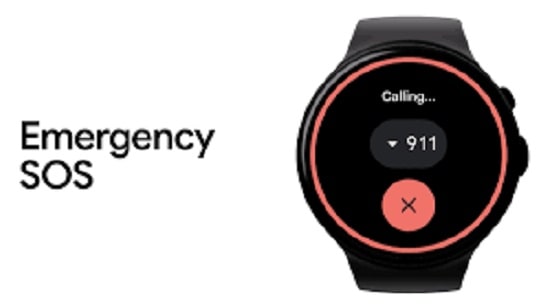News
Google I/O 2022: Wear OS App Updates, Android Tablet Experience Upgrades, and a New Wallet App

On Wednesday, Google unveiled a variety of enhancements for Wear OS and Android tablets during the I/O 2022 consumer keynote to improve user experiences across all devices, not just phones.
The easy access to Emergency SOS is one of the essential enhancements coming to Wear OS. Google Assistant will be available on smartwatches as well. Additionally, Google applications for Android tablets are being upgraded.
Google Wallet on Android has been upgraded to handle items like payment cards, transport and event tickets, and even student IDs.
Google has begun enabling Wear OS users to contact a trusted family member or summon an emergency service straight from their wristwatch by adding Emergency SOS. The Mountain View, a California-based business, worked with several partners to realize reality.
Google also mentioned the Emergency Location Services (ELS) function, which is meant to assist first responders in locating you in a medical emergency or natural catastrophe. The business was released earlier this year in Bulgaria, Paraguay, Saudi Arabia, and Spain and is now accessible to over one billion people globally.
Google also offers Early Earthquake Warnings in 25 nations, which it plans to extend to “many of the remaining high-risk zones” throughout the globe.
In addition, to Wear OS, Google announced at I/O 2022 that Google Assistant would be available on Samsung Galaxy watches. To begin, it will be accessible on the Galaxy Watch 4 series. Wear OS users may leverage the Google Assistant experience for natural speech interactions and accessing services like voice-controlled navigation and scheduling reminders.
Wear OS will also get additional applications from Google. Apps like SoundCloud and Deezer will be available on Wear OS-based smartwatches later this year. Adidas Running, Spotify, Line, and KakaoTalk have all made substantial improvements to provide a better experience.
In May of last year, Google announced cooperation with Samsung in which Tizen and Wear OS will be combined. The business expressed its enthusiasm for the move by stating that there are now three times as many active Wear OS devices as last year. However, the precise number of active Wear OS users is still unknown.
Google also announced that additional Wear OS devices would be available from Samsung, Fossil Group, Montblanc, and Mobvoi, among others.
For tablet computers, At the I/O 2022 keynote, Google revealed that over 20 Google applications would be updated in the following weeks to take “full use” of the extra screen area. YouTube Music, Google Maps, and Messages are just a few examples.
Google also said it collaborated with other applications such as TikTok, Zoom, and Facebook to enhance its Android tablet experiences.
Users will also copy URLs or images from their phones and paste them onto their tablets.
Google is deploying virtual cards on Android in general, accessible on Chrome and at the system level to allow users to make purchases without physically inputting card data such as the CVV when checking out.
Google is also bringing Fast Connect to new devices, making it easier for consumers to set up and pair their devices. The expansion began with earbuds and has now expanded to include Bluetooth headphones, Chromebooks, and Smart TVs.
The Google Wallet app for Android is also evolving into a centralized platform for accessing payment cards, transport and event tickets, boarding and loyalty pass, and student IDs. It will also keep digital driver’s licenses and official IDs and virtual vehicle keys, and immunization records. Google is emulating Apple’s Wallet app on Android with its Wallet app.
Apart from introducing new capabilities to the Wallet app, Google also focuses on upgrading its connections with other Google applications and services. Once the card is connected to the Wallet, users will display their transit card balance in Google Maps while searching for directions. By touching the card information on Google Maps, users will add fare to their transport card.
Wear OS will also get Google Wallet, initially enabling payment cards.
Along with the Wallet upgrades, Google also announced improving the Rich Communication Services (RCS) messaging experience by enabling encryption for group talks. According to the business, it will be released in open beta later this year.
Google also announced that casting capabilities would be extended to Chromebooks and Android Auto in-car systems.












You must be logged in to post a comment Login